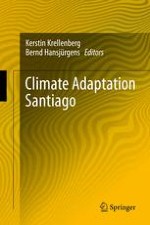2014 | OriginalPaper | Chapter
11. Going Beyond Santiago: A Regional Learning Network for Climate Change Adaptation in Latin American Megacities
Authors : Ricardo Jordan, Kerstin Krellenberg, Johannes Rehner
Published in: Climate Adaptation Santiago
Publisher: Springer Berlin Heidelberg
Activate our intelligent search to find suitable subject content or patents.
Select sections of text to find matching patents with Artificial Intelligence. powered by
Select sections of text to find additional relevant content using AI-assisted search. powered by
